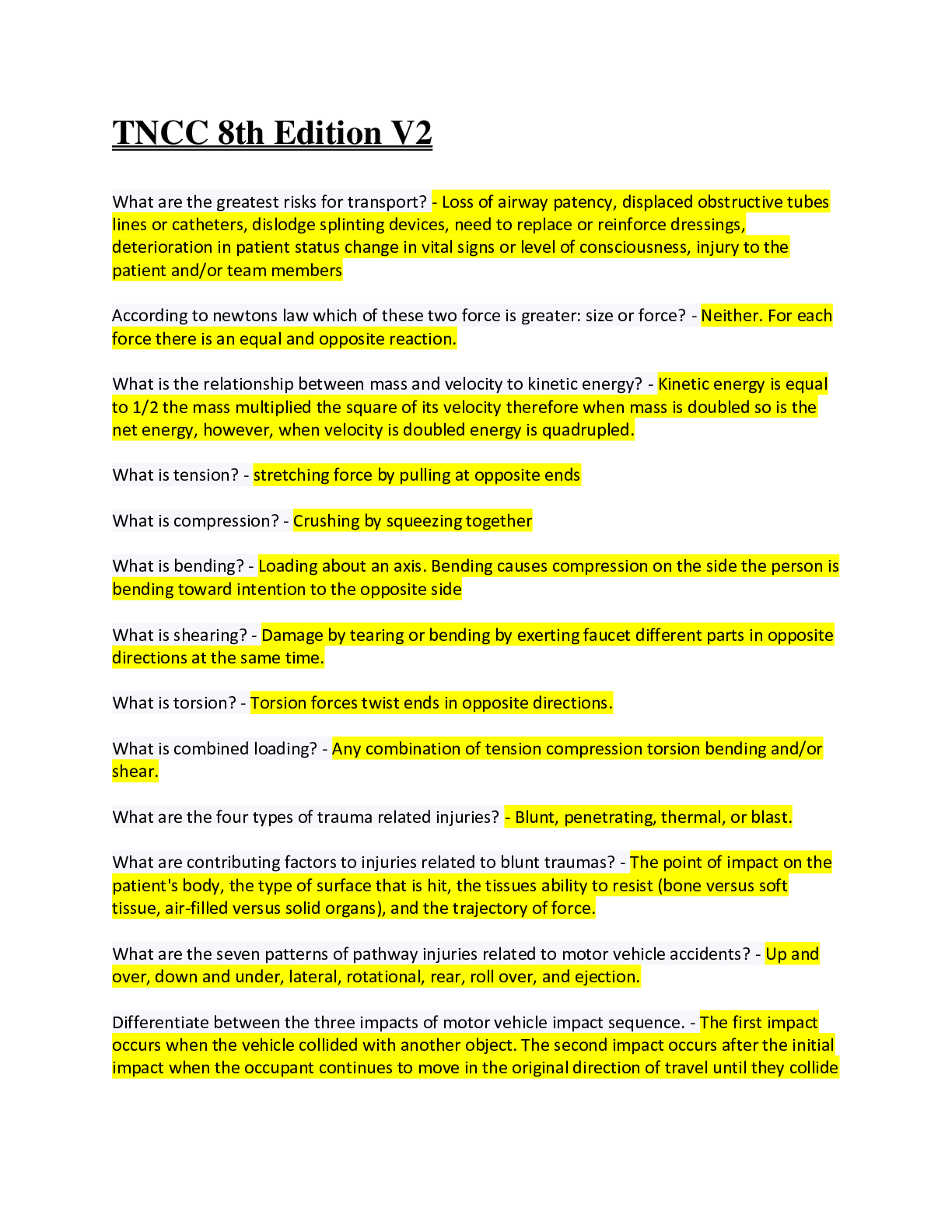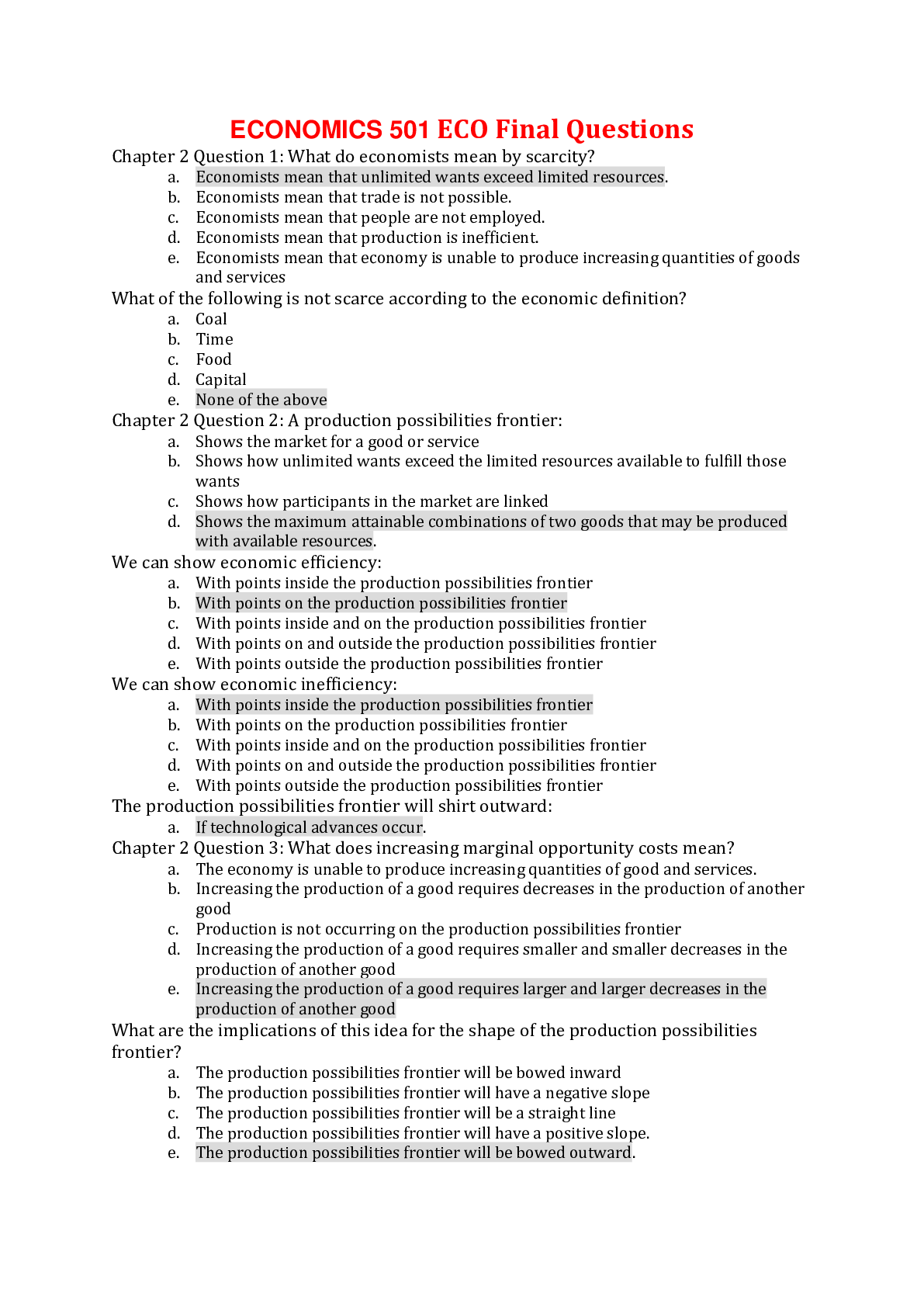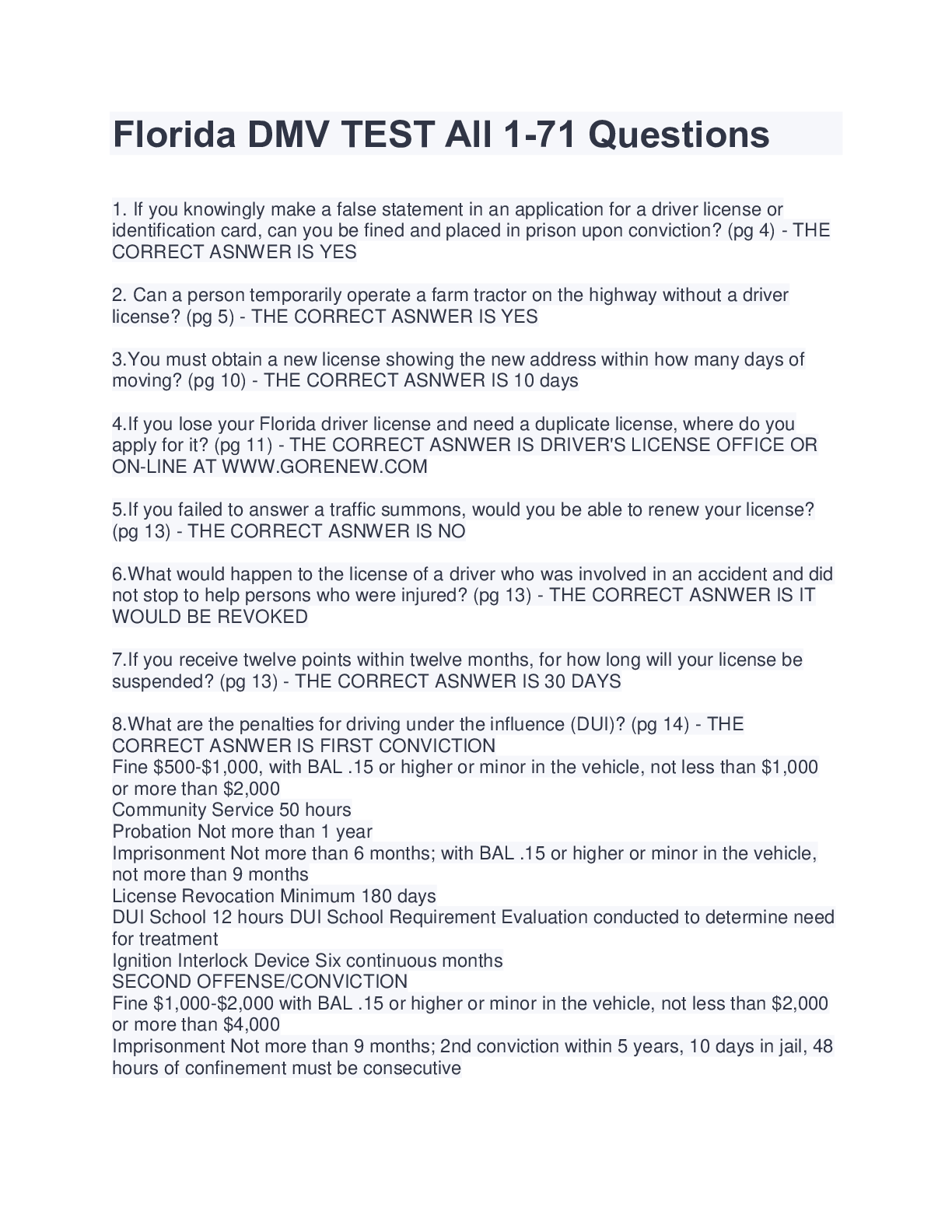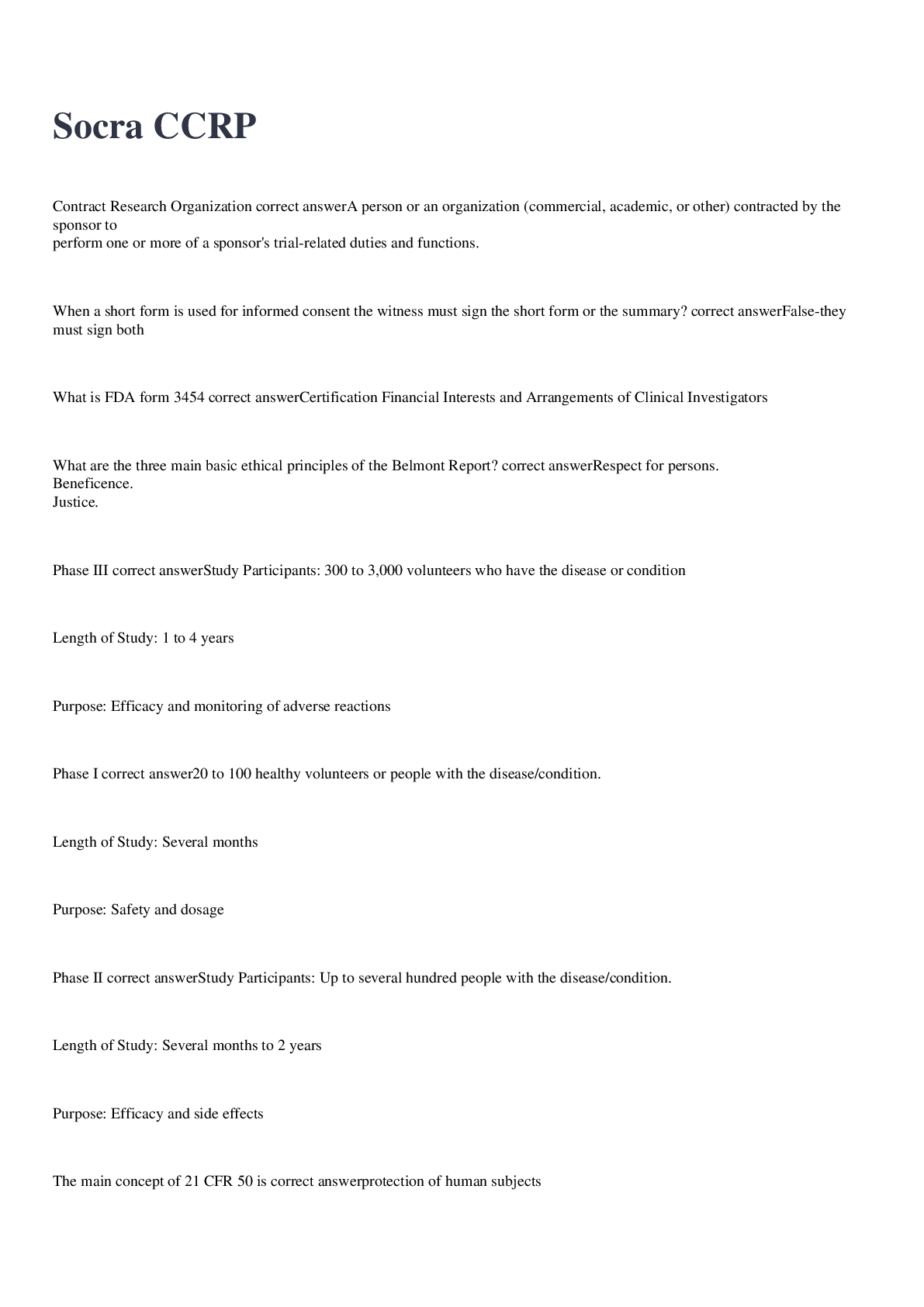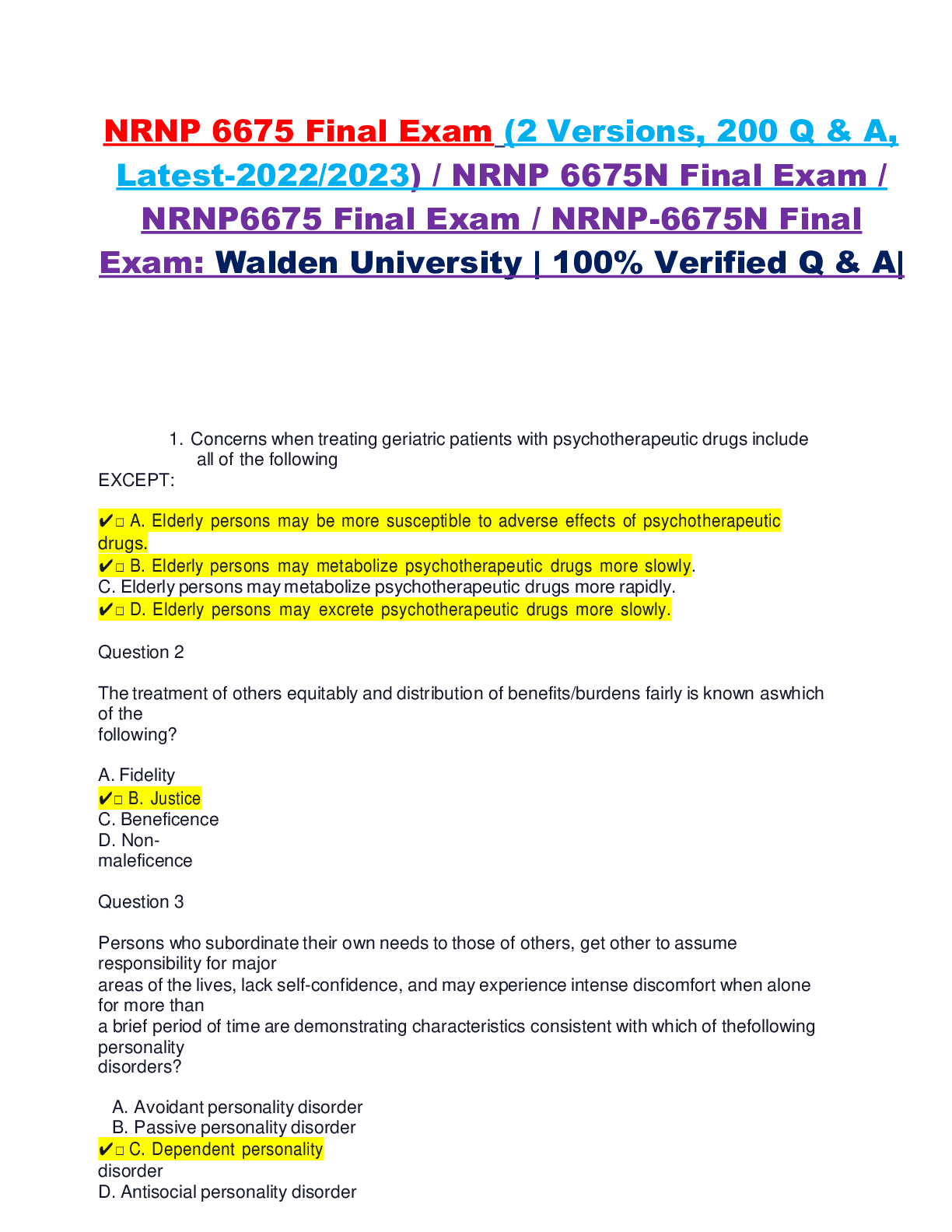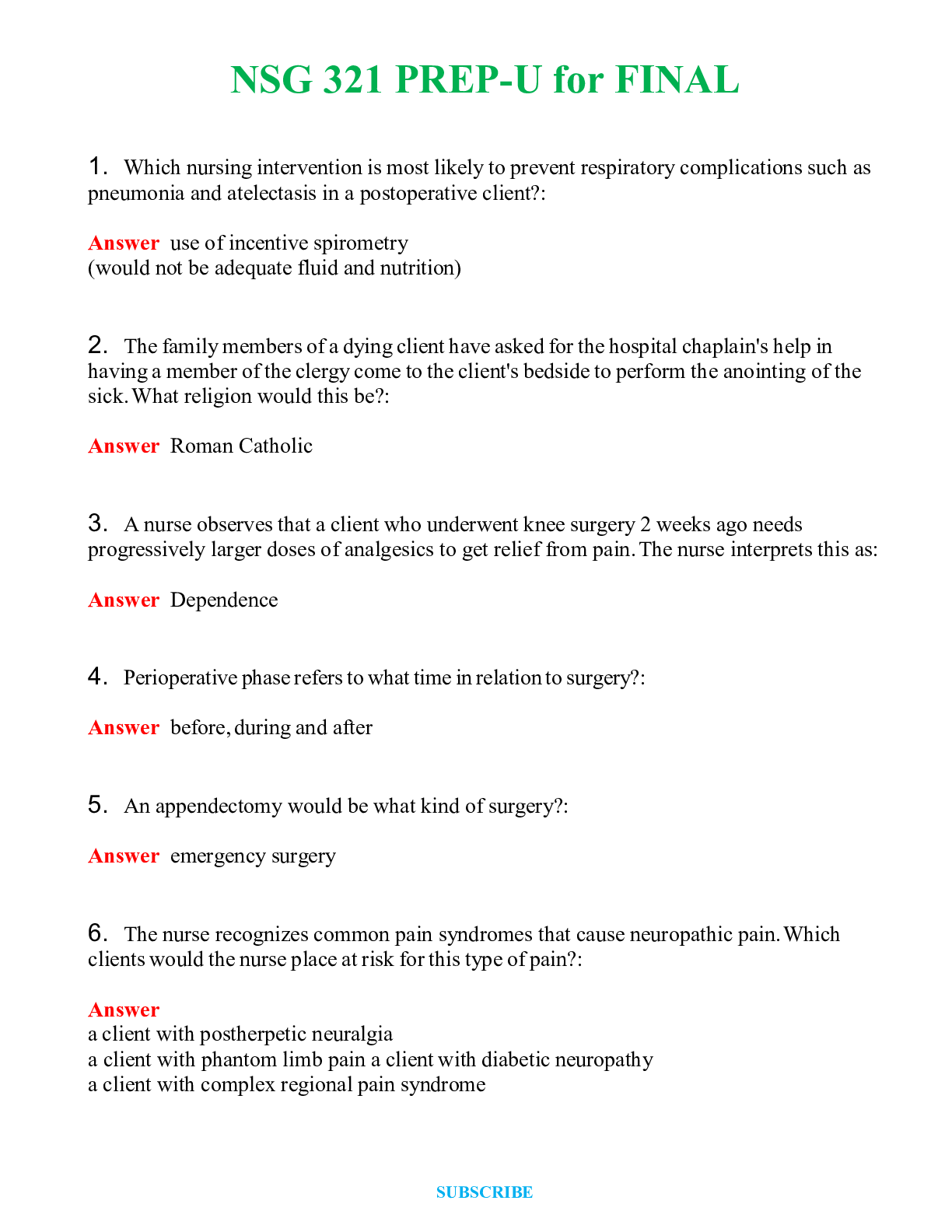NURS6512 WK 7 QUIZ. Graded A
Document Content and Description Below
NURS6512 WK 7 QUIZ What is considered the gold standard diagnostic radiology test for appendicitis? Thin cut CT CBC with diff Abdominal ultrasound Barium enema Pulsus paradoxus... greater than 20 mm Hg, tachycardia greater than 130 beats per minute, and increasing dyspnea are signs of: intracranial pressure. pulmonary hypertension. status asthmaticus. tetanic contractions. drug overdose. A 5-year-old is complaining of nondescriptive "belly pain." Your next action should be to ask him to: A. point a finger to the spot that hurts. B. draw a circle around the area that hurts. C. use a metaphor to describe the pain. D. identify how pain medication affects the pain. You are caring for a patient with trigeminal neuralgia. During the assessment, the patient would describe the pain as: A. throbbing and dull. B. burning or shocklike. C. tender and deep. D. cramping and spasmodic. Ms. Green is an 85-year-old female patient with dementia who presents to the emergency department with her daughter because of a change in function. Which pain assessment scale would be the best choice? A. Oucher Scale B. Checklist for Nonverbal Pain Indicators C. Wong/Baker Rating Scale D. CRIES Scale Body language that leads you to suspect the person is in pain is: A. talkative, verbose speech. B. fretful hand movements. C. focused, fixed eye stares. D. marked salivation. You ask the patient to raise the head and shoulders while lying in a supine position. A midline abdominal ridge rises. You chart this observation as a(n): small inguinal hernia. large epigastric hernia. abdominal lipoma. diastasis recti. incisional hernia. When auscultating the abdomen, which finding would indicate collateral circulation between the portal and systemic venous systems? Arterial bruit Gastric rumbling Renal hyperresonance Borborygmi Venous hum Which structure is located in the hypogastric region of the abdomen? Bladder Cecum Gallbladder Stomach Liver The major function of the large intestine is: water absorption. food digestion. carbohydrate absorption. mucous absorption. glycogen breakdown. Before performing an abdominal examination, the examiner should: ascertain the patient s HIV status. have the patient empty his or her bladder. don double gloves. completely disrobe the patient. uncover only the painful areas of the abdomen. Which abdominal organs also produce hormones and function as endocrine glands? Kidney and liver Liver and gallbladder Stomach and spleen Gallbladder and pancreas Pancreas and kidney After thorough inspection of the abdomen, the next assessment step is to: percuss. palpate nonpainful areas. auscultate. perform a rectal examination. palpate painful areas. A mother brings her 2-year-old child for you to assess. The mother feels a lump whenever she fastens the child s diaper. Nephroblastoma is likely for this child when your physical examination of the abdomen reveals a(n): fixed mass palpated in the hypogastric area. tender, midline abdominal mass. olive-sized mass of the right upper quadrant. nontender, slightly moveable, flank mass. sausage-shaped mass in the left upper quadrant. What condition is associated with purplish striae? Cushing disease Diastasis recti Liver cirrhosis Recent pregnancy Intra-abdominal bleeding When examining a patient with tense abdominal musculature, a helpful technique is to have the patient: hold his or her breath. sit upright. flex his or her knees. raise his or her head off the pillow. fully extend the legs. A patient presents to the emergency department after a motor vehicle accident. The patient sustained blunt trauma to the abdomen and complains of pain in the upper left quadrant that radiates to the left shoulder. What organ is most likely injured? Gallbladder Liver Spleen Stomach Colon Visible intestinal peristalsis may indicate: normal digestion. intestinal obstruction. increased pulse pressure of aorta. aortic aneurysm. paralytic ileus. The majority of nutrient absorption takes place in the: stomach. small intestine. cecum. transverse colon. descending colon. An umbilical assessment in the newborn that is of concern is: a thick cord. an umbilical hernia. one umbilical artery and two veins. pulsations superior to the umbilicus. visible nondistended superficial veins. [Show More]
Last updated: 1 year ago
Preview 1 out of 5 pages

Reviews( 0 )
Document information
Connected school, study & course
About the document
Uploaded On
Aug 30, 2019
Number of pages
5
Written in
Additional information
This document has been written for:
Uploaded
Aug 30, 2019
Downloads
0
Views
64



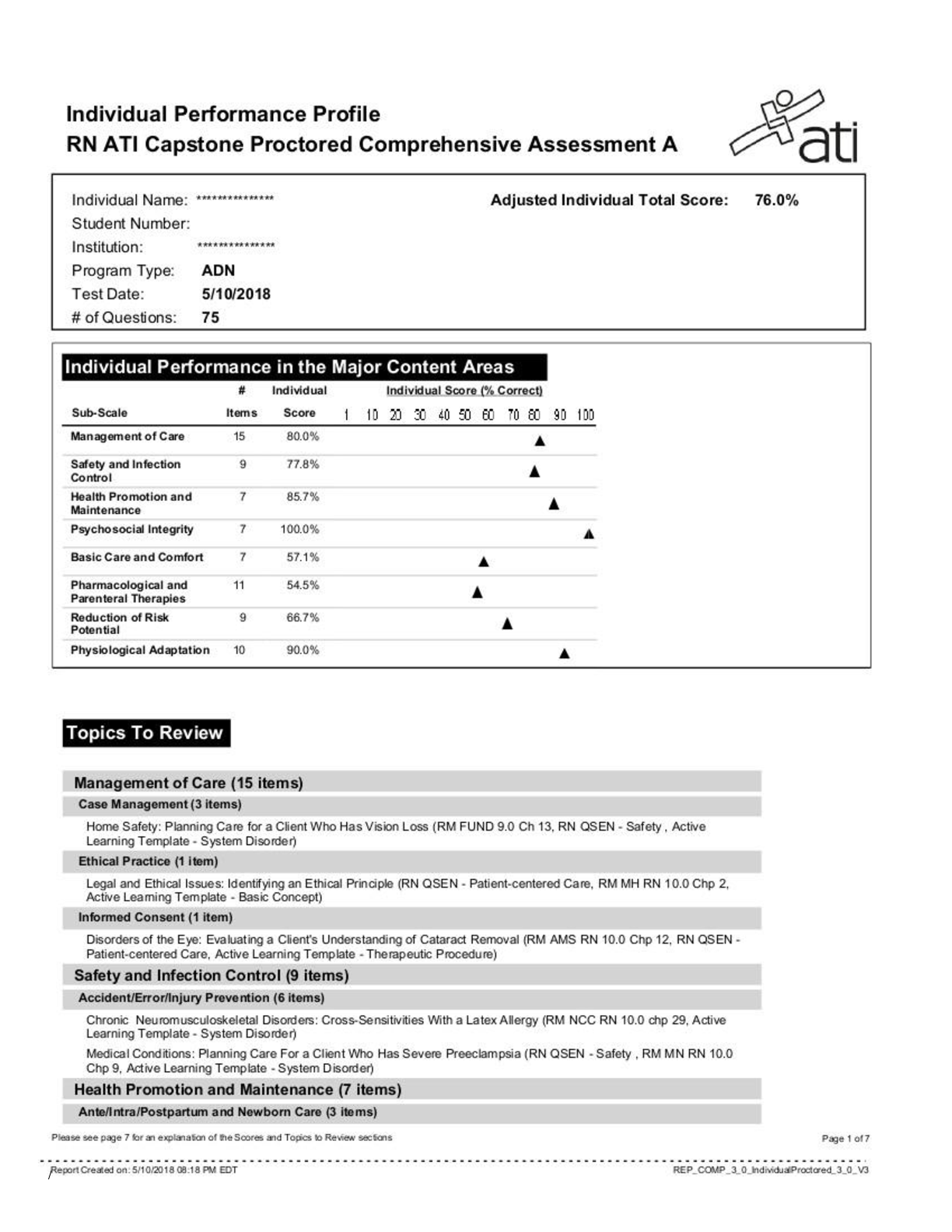
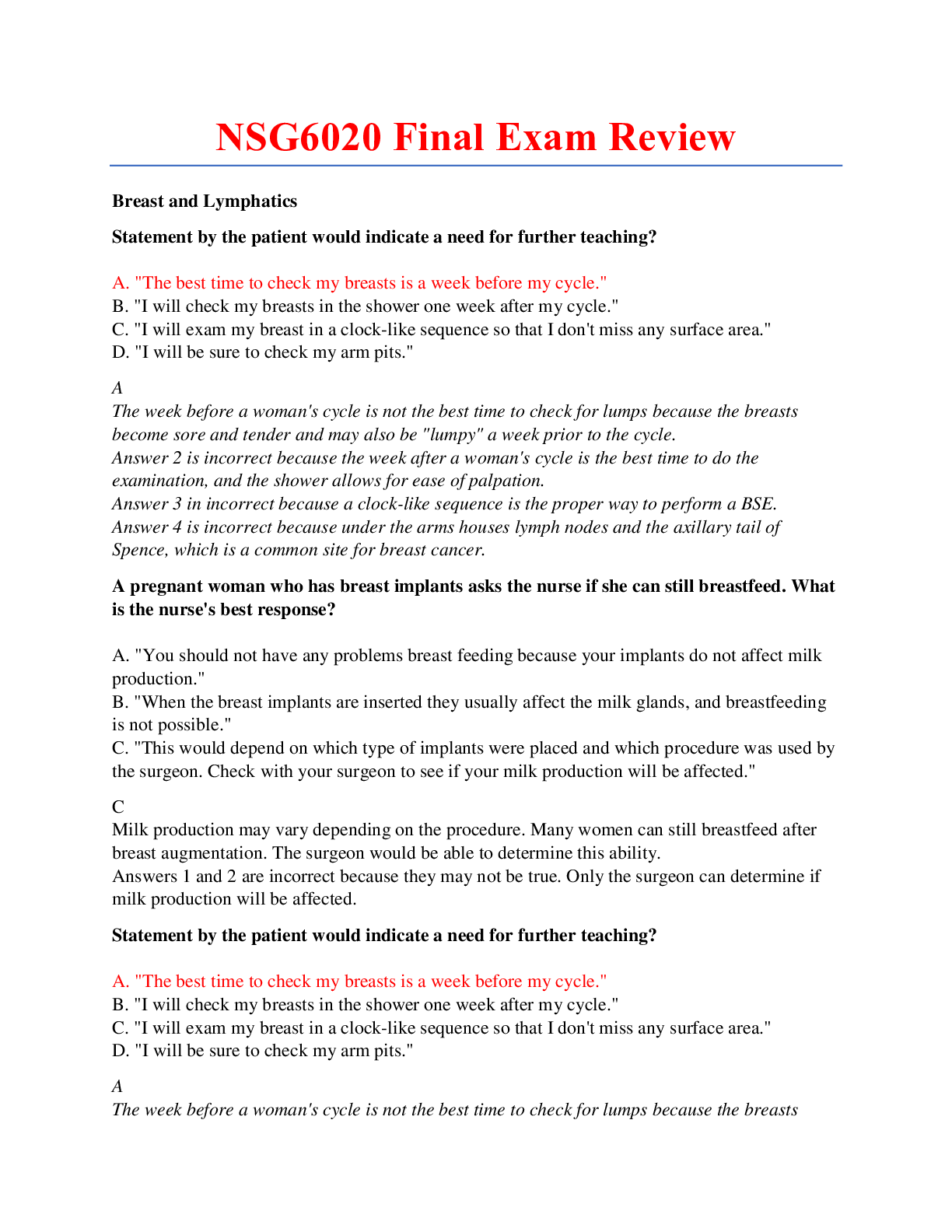
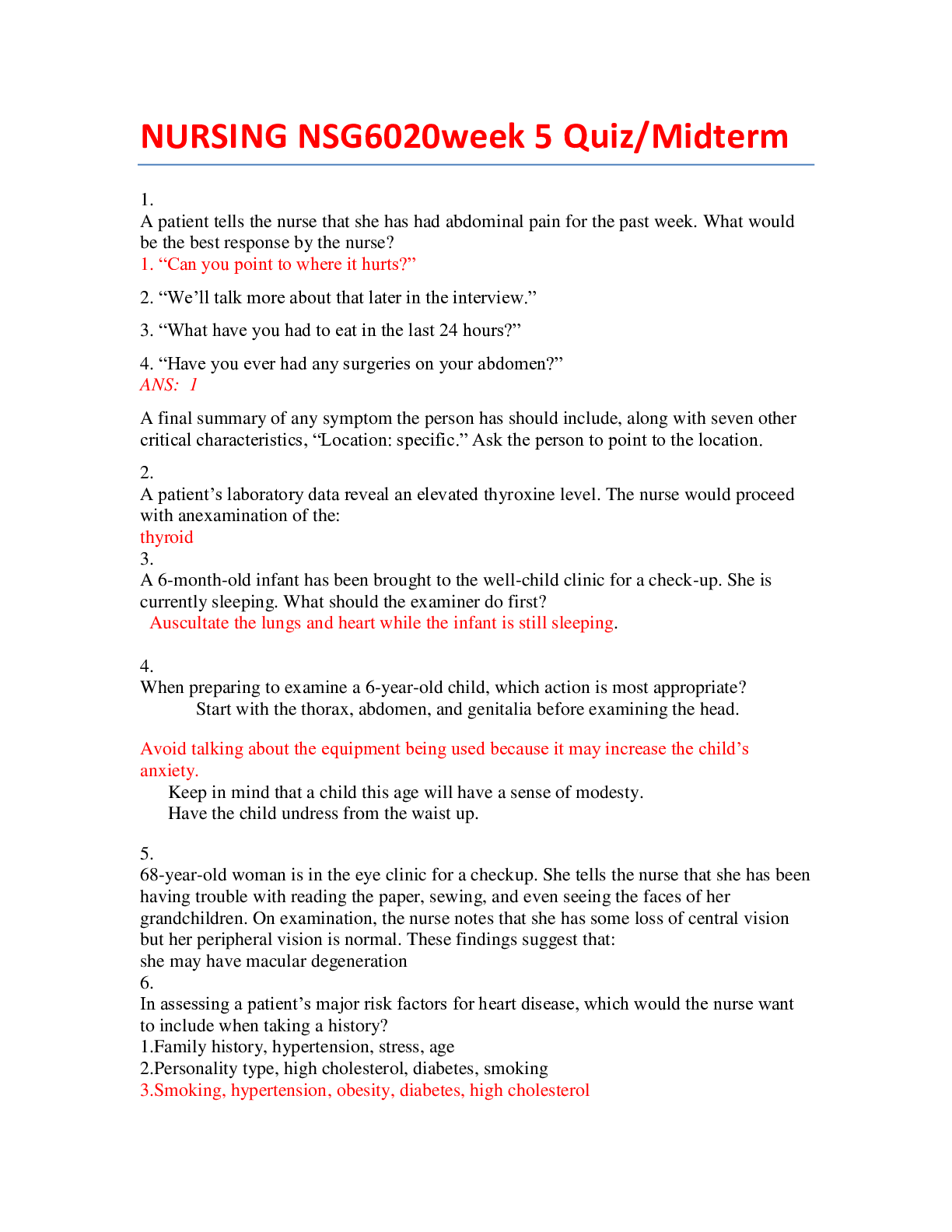
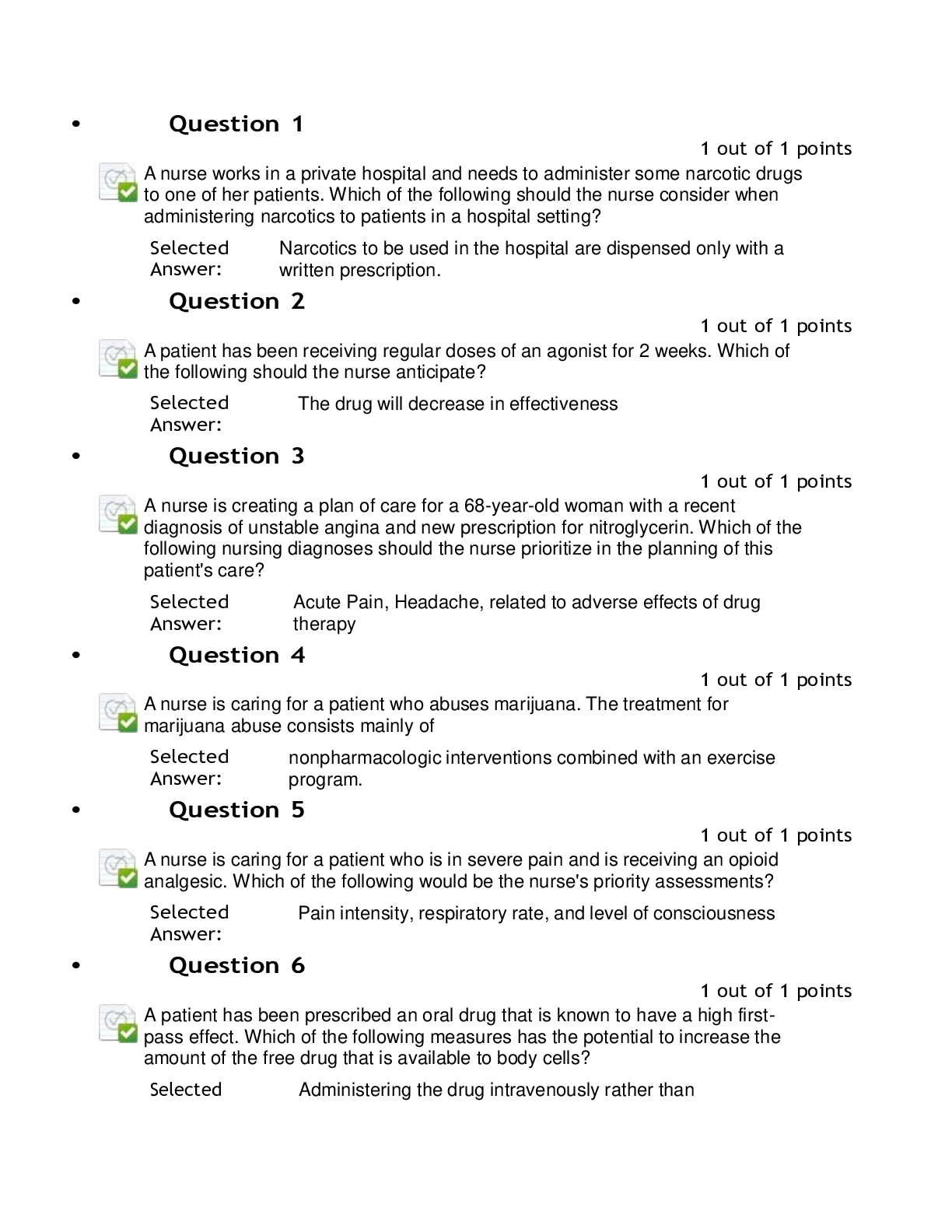
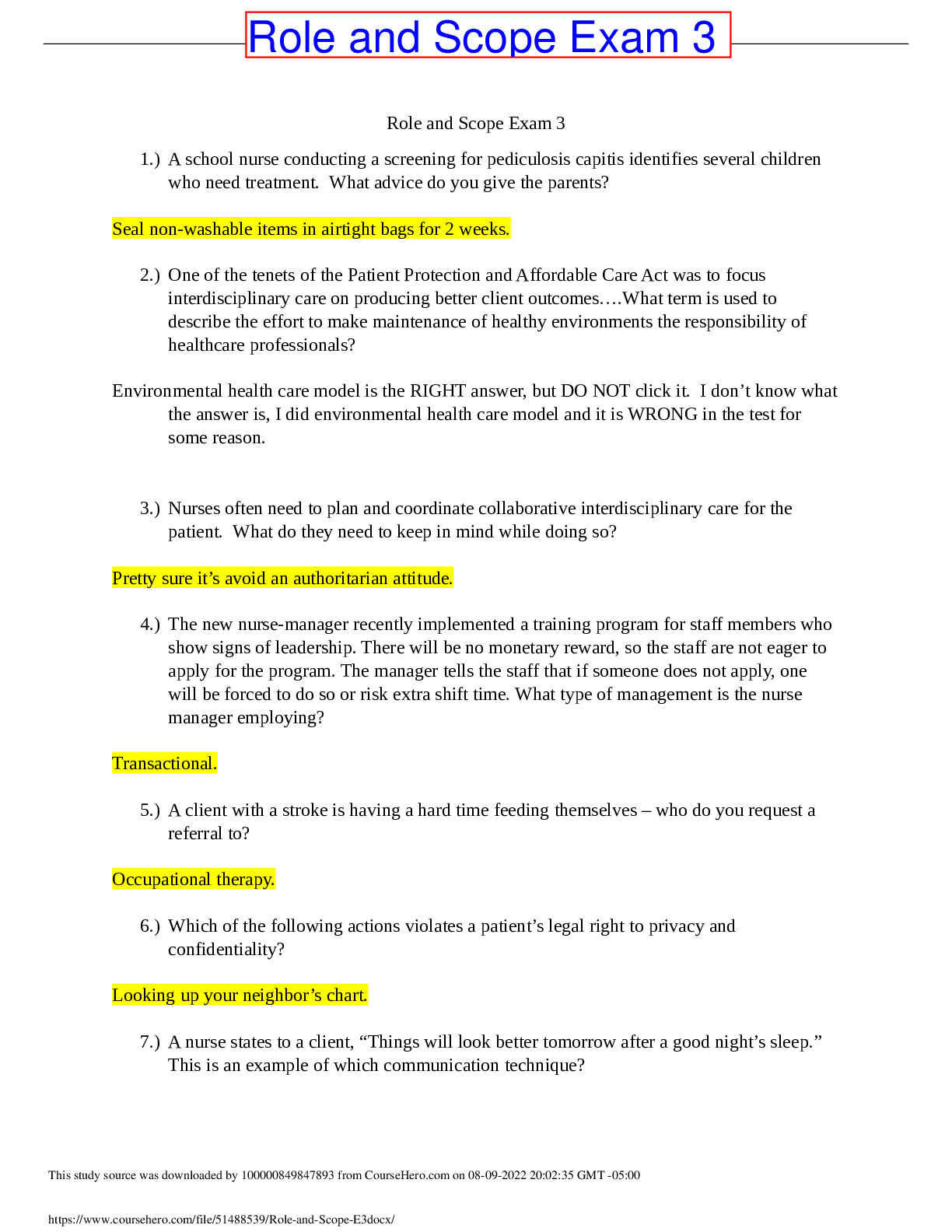
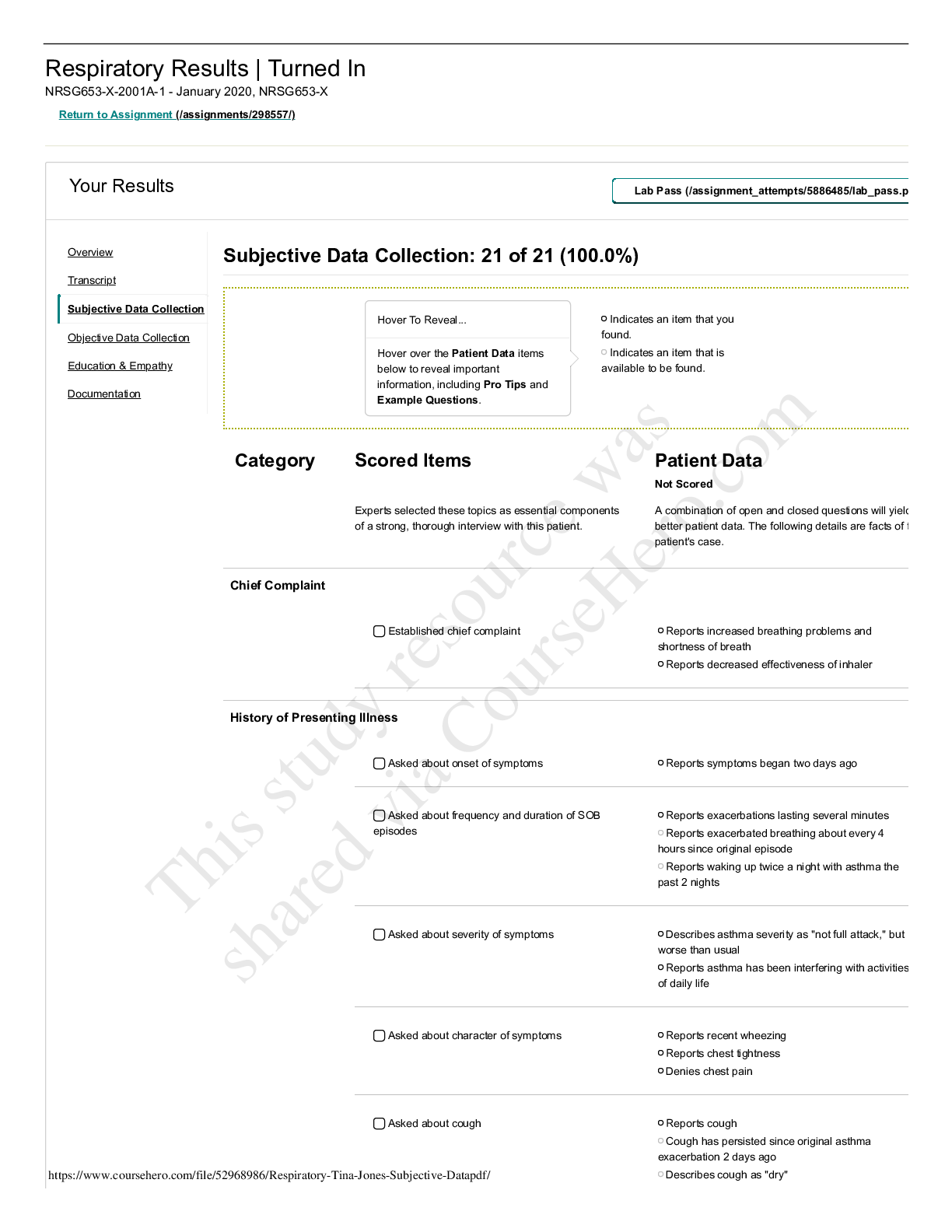

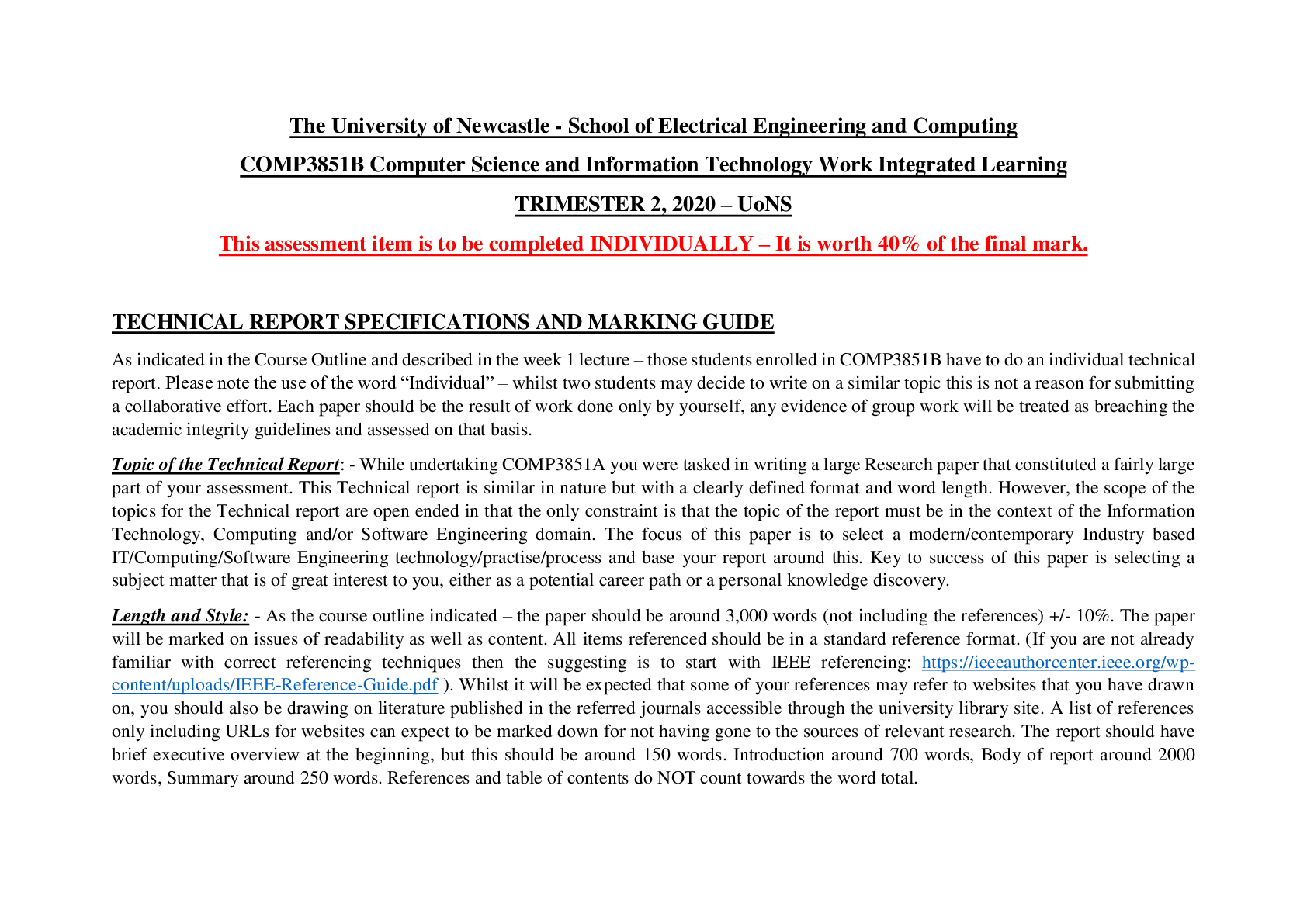


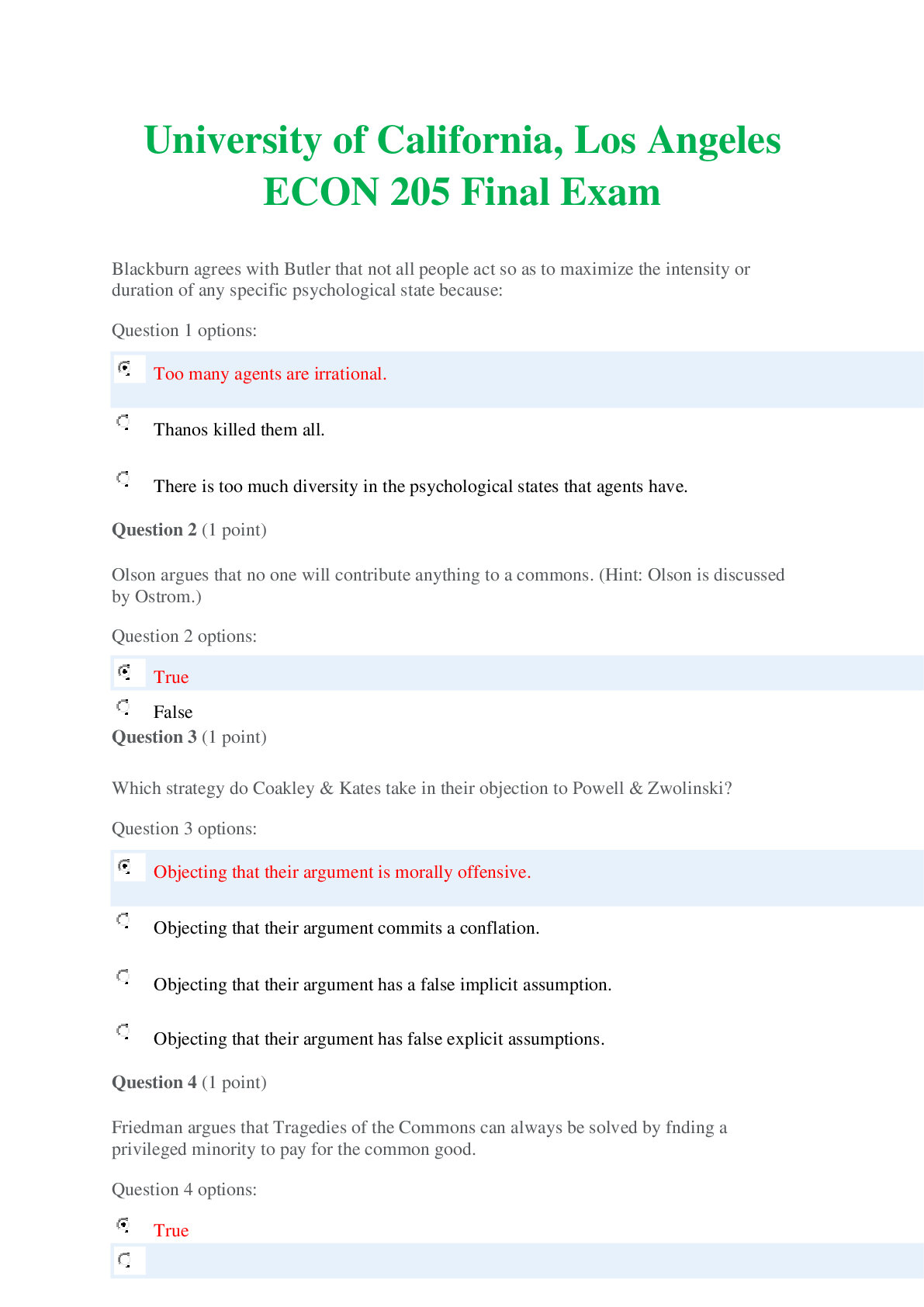

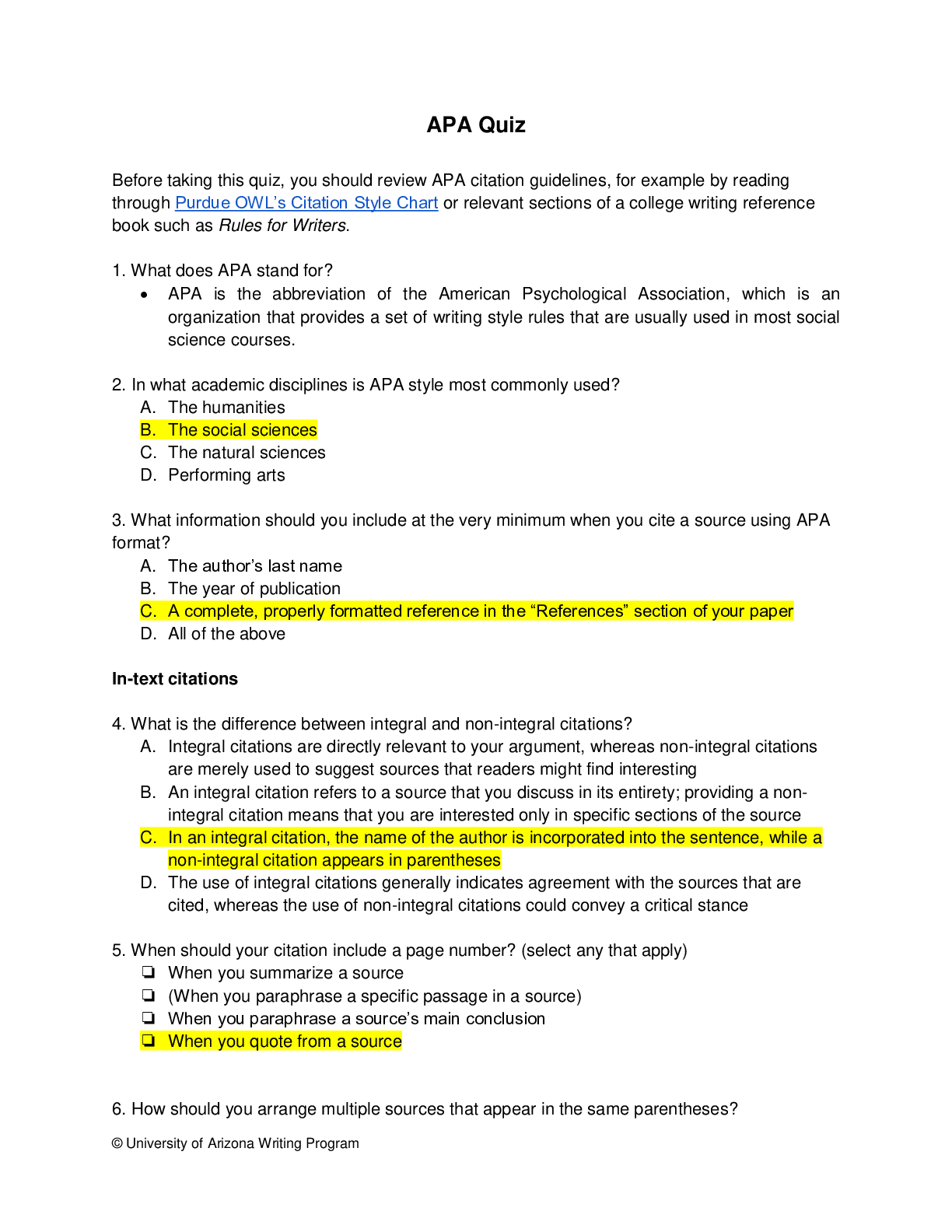
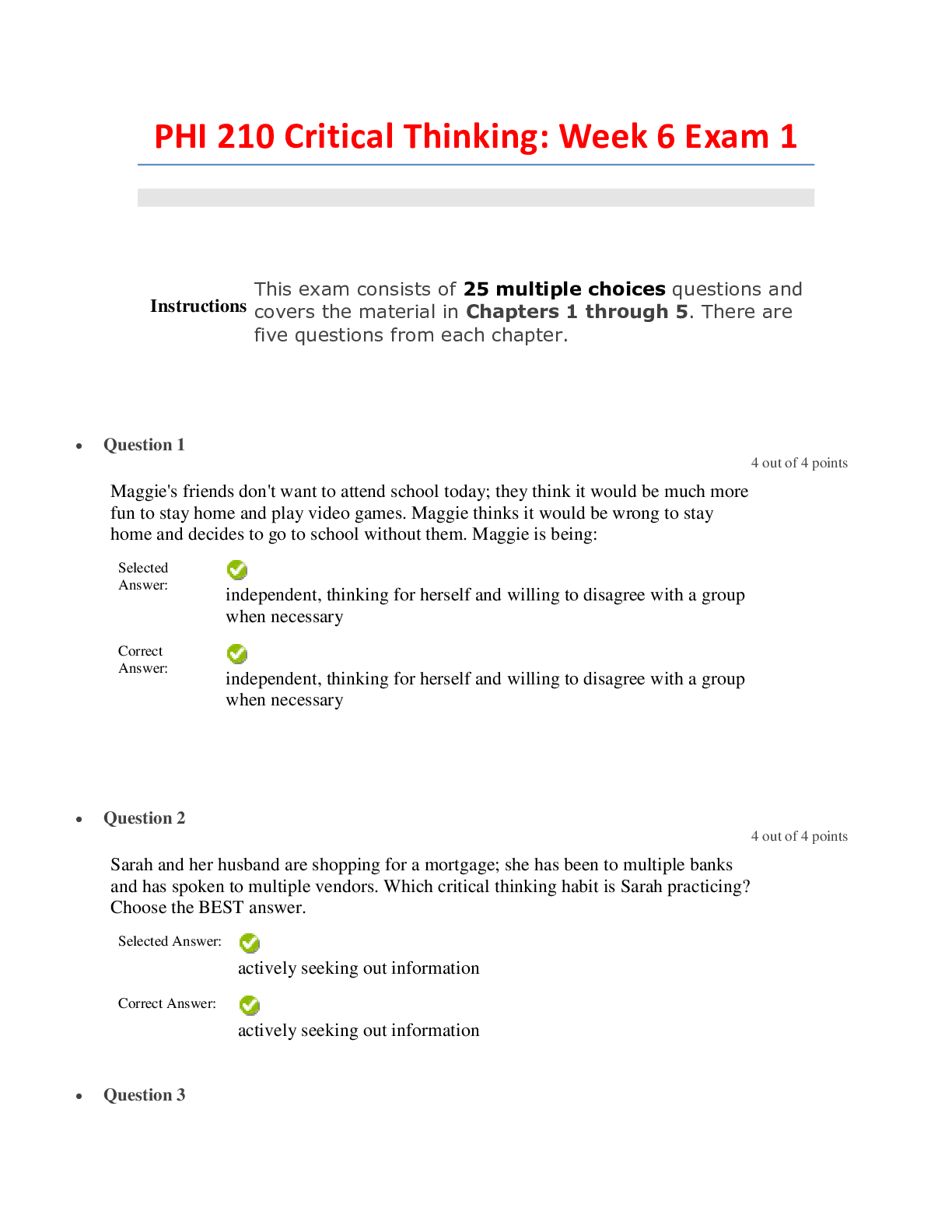
.png)




